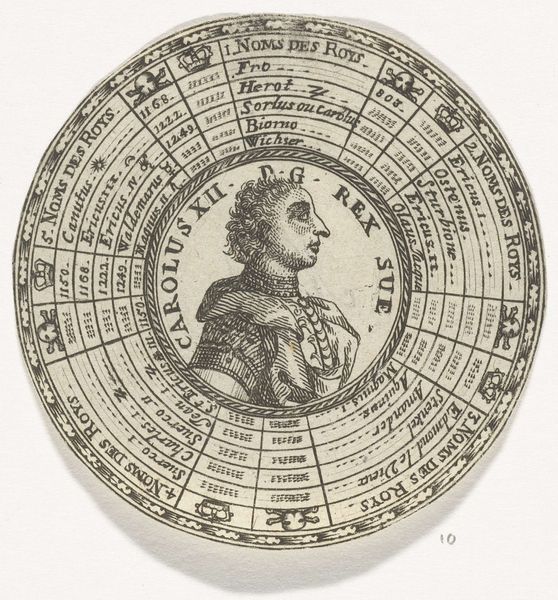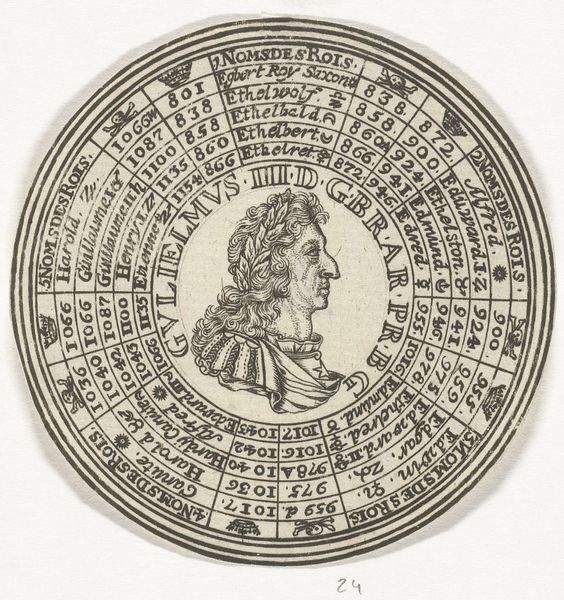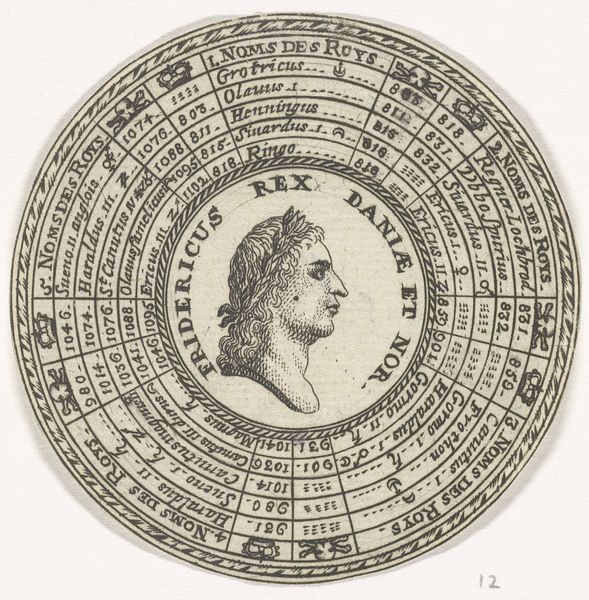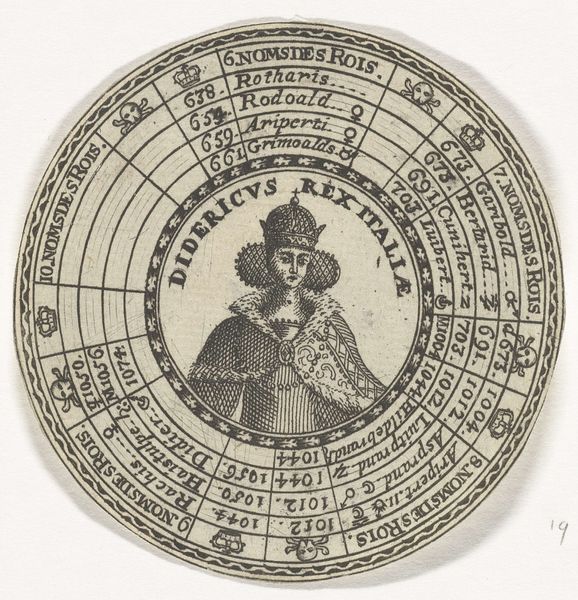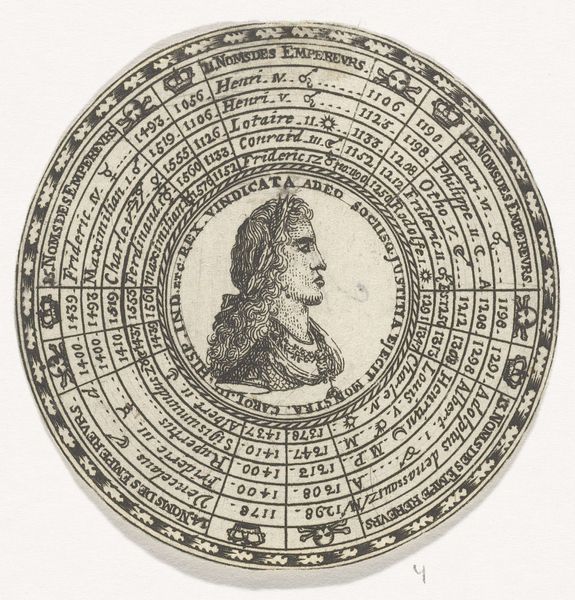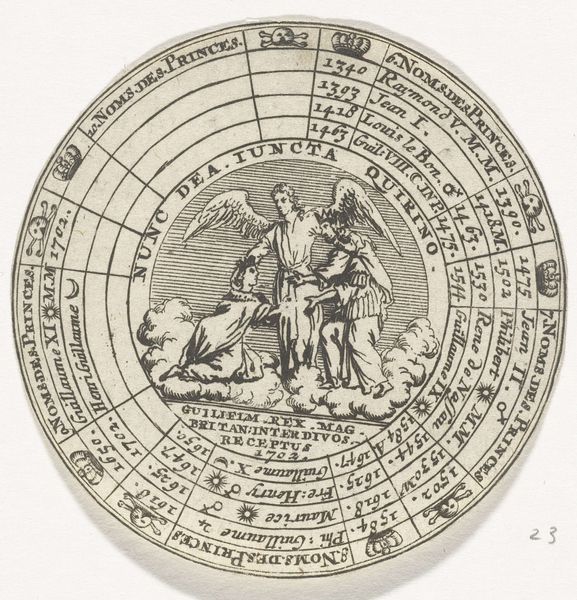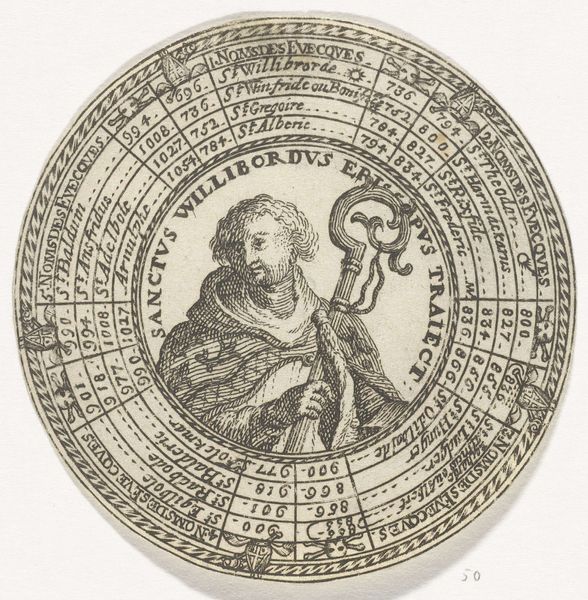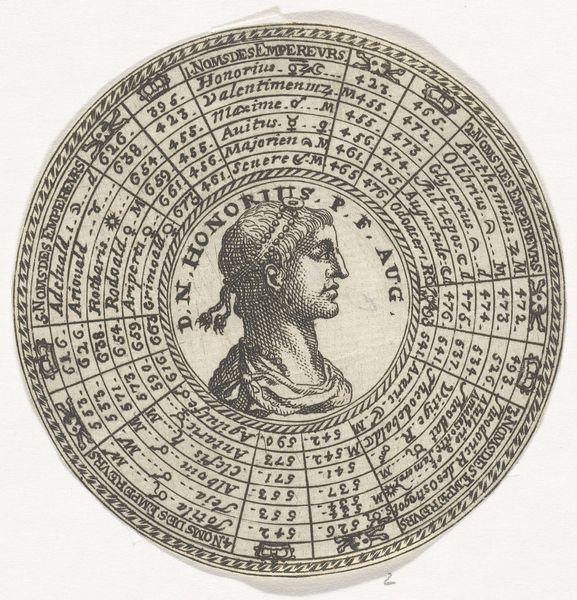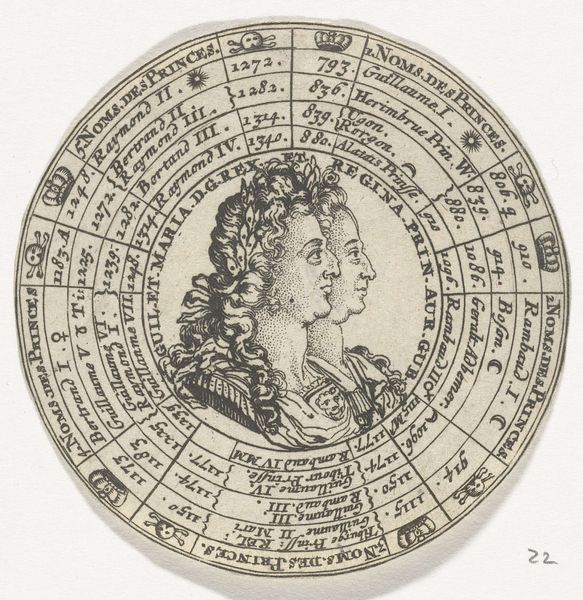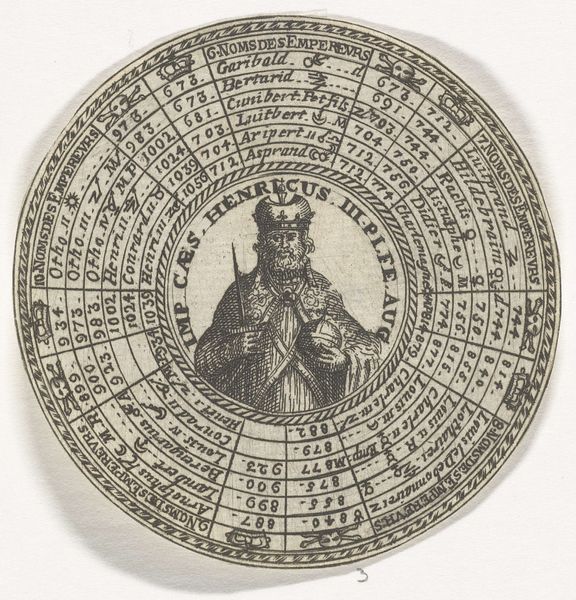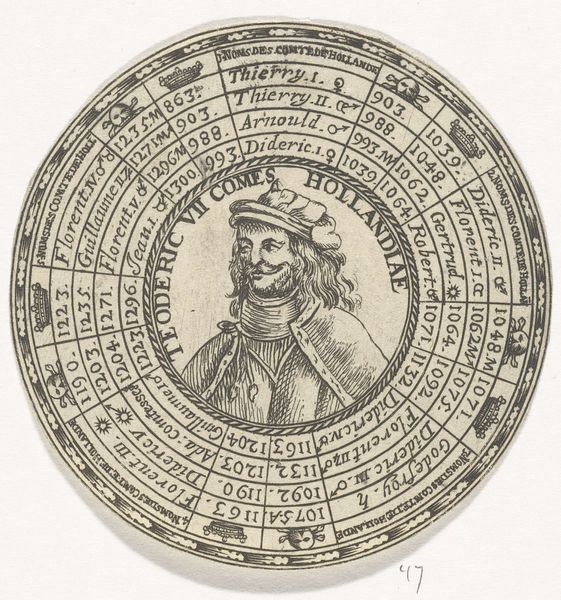
drawing, print, ink, engraving
#
portrait
#
pencil drawn
#
drawing
# print
#
classical-realism
#
romanesque
#
ink
#
ancient-mediterranean
#
pen-ink sketch
#
history-painting
#
engraving
Copyright: Rijks Museum: Open Domain
Curator: This circular print from 1712, whose artist is unknown, bears the imposing title: "Penning met het portret van Marcus Aurelius en de namen van Romeinse keizers" which translates to "Medal with the portrait of Marcus Aurelius and the names of Roman Emperors." Editor: Immediately, I'm struck by the rigid geometry juxtaposed with the classical portrait in the center. The austerity and stark contrasts of black ink on white create an imposing effect despite its likely small size. Curator: Indeed. Though created much later, the engraving clearly harkens back to the visual language of ancient Rome. The depiction of Aurelius is in keeping with the imperial portraiture style. Think of the power the image of the Emperor holds, even centuries after their death! Editor: Absolutely. The circular composition feels deliberate. We've got concentric rings of text surrounding a central portrait, and those divisions almost give it the feel of a diagram. Look at the careful linework of his profile and then at the text; they use different visual languages to convey meaning. Curator: Exactly! Aurelius, a Stoic philosopher as well as an Emperor, is depicted with a crown, reinforcing his position. Encircling his image are names, dates, a calendar. It's a symbol of Roman continuity, a desire to anchor the present in a glorious past. And perhaps also to grapple with power – to document and to circumscribe it within a timeline. Editor: Note the almost scientific precision in the lettering, very precise for something created manually with a stylus. The design implies a system. It's attempting to categorize, and organize, not just represent, history. A grid within a circle almost mimics the earth itself, with rulers positioned on a globe of time and space. Curator: Perhaps it was designed to serve an educational purpose, or as a mnemonic device to recall the succession of emperors. Each named ruler contributing to the ongoing Roman story. Editor: I agree. The visual rhetoric almost overwhelms. However, I notice a desire to structure the narrative using visual conventions. It presents an idea of permanence. Curator: Seeing this through a semiotic lens really opens it up. It takes the past and, through symbolic representation, turns it into a potent message. Editor: This intense, little print, has an outsized, layered purpose—to visualize the architecture of time through line and portraiture.
Comments
No comments
Be the first to comment and join the conversation on the ultimate creative platform.
